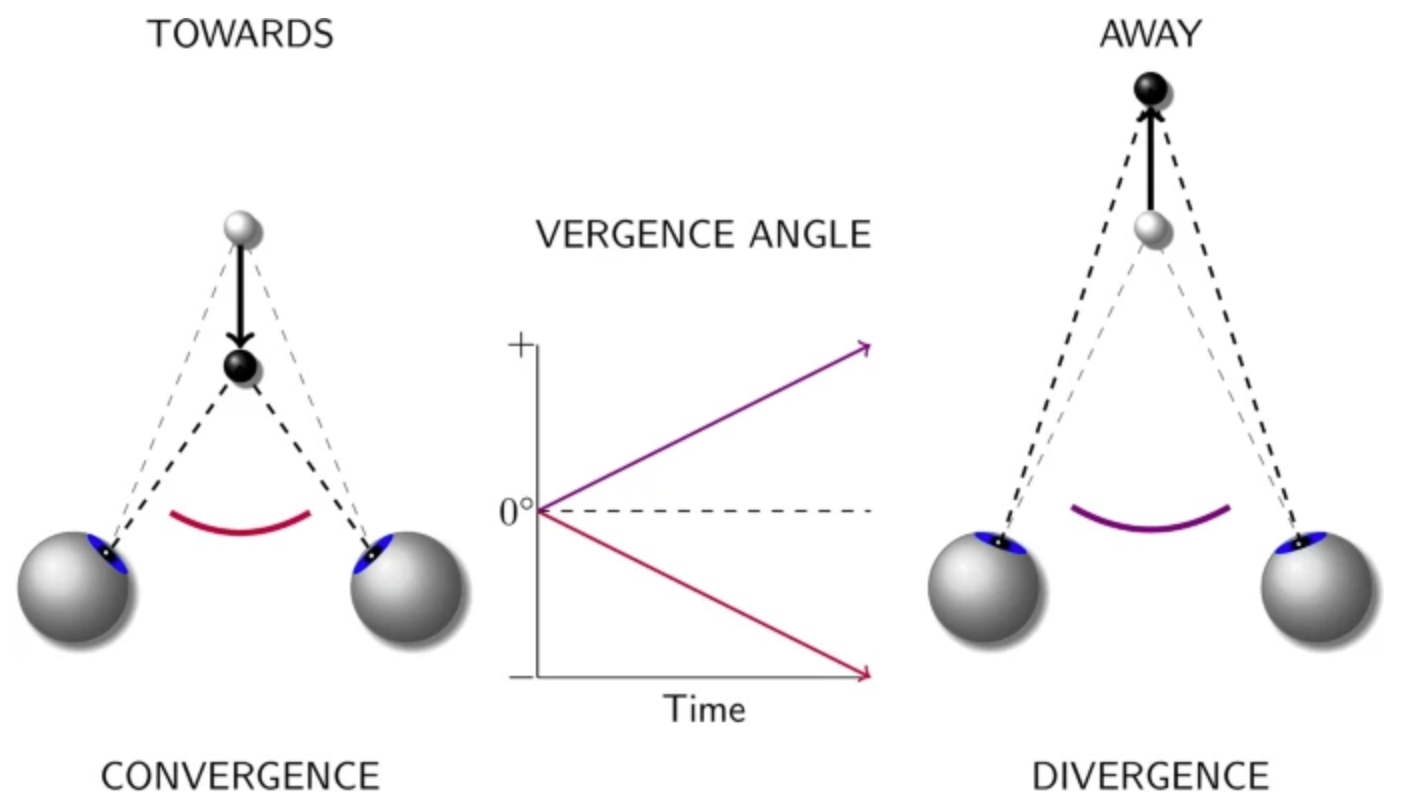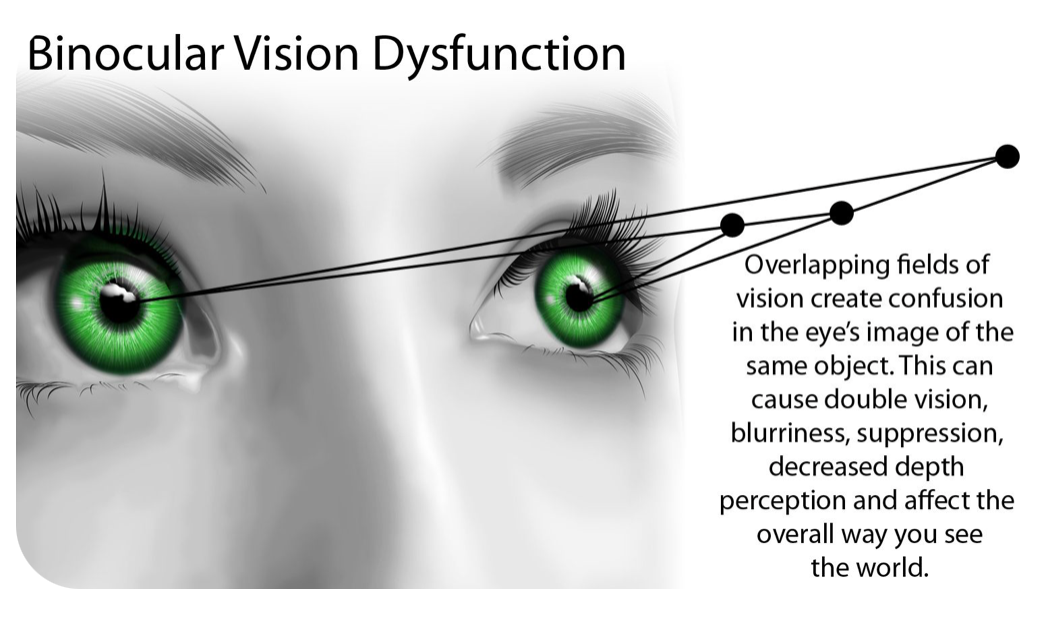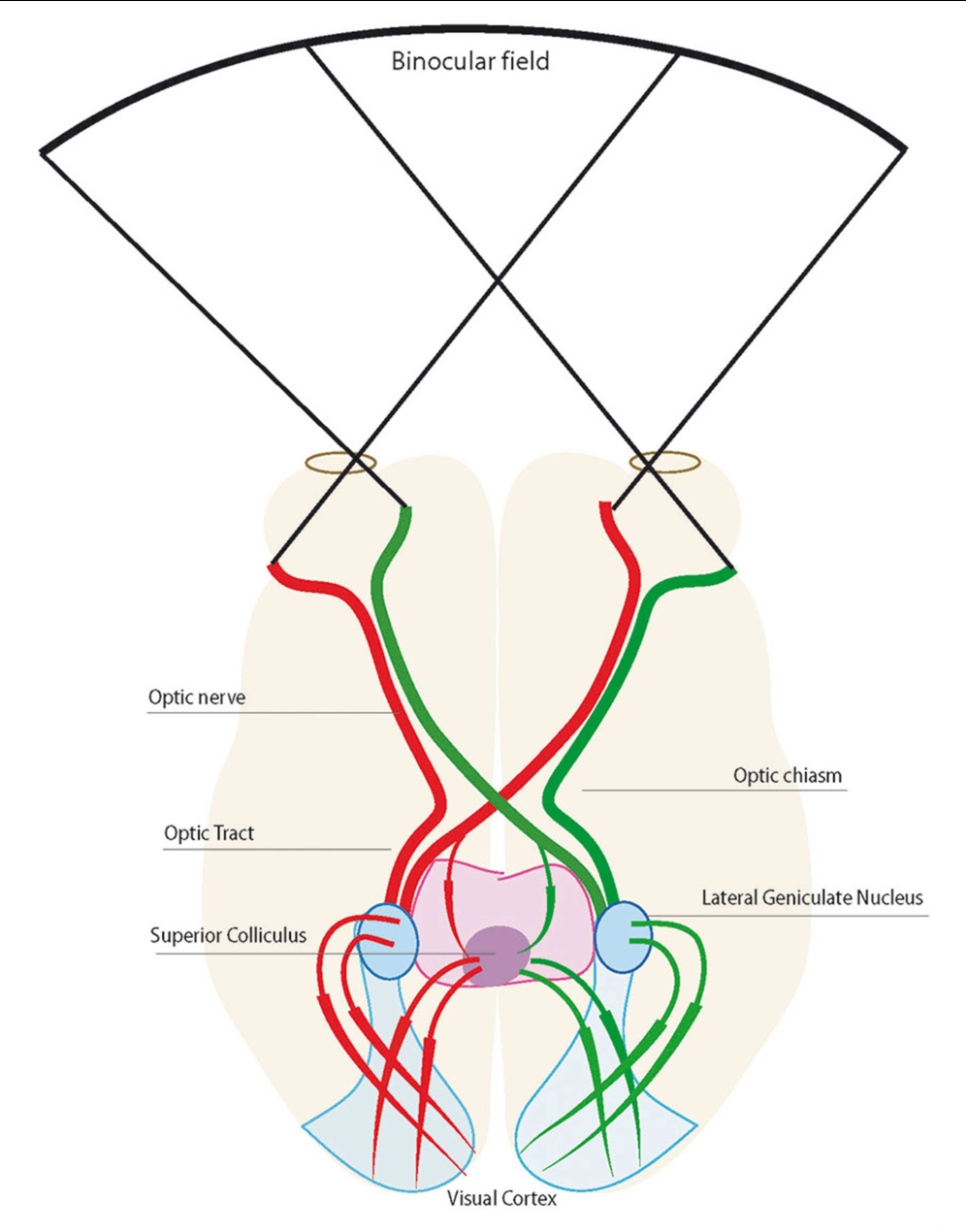Convergence and accommodative insufficiency predict engagement and cognitive fatigue

How much does convergence and accommodative deficits impact our performance? Recent studies have shown that these deficits can increase the feelings of cognitive fatigue and cause less task engagement.
The results of this study indicate that symptoms of oculomotor deficits could hamper optimal operator cognitive states in working conditions. We showed that self-report symptoms of accommodative-vergence deficits can account for variability in operator task engagement and cognitive fatigue during the performance of a multifaceted task that mimics the cognitive tasks experienced by several work conditions (e.g., airline pilots, military drone pilots, truck drivers).
Deficits in the accommodative and/or vergence responses have also been linked with inattentive behavioral symptoms and also lack of response inhibition showing that vergence control and cognitive functions mobilize the same cortical areas, for example, parietofrontal areas.
What is Vergence?
Vergence is the simultaneous movement of both eyes in opposite directions to obtain or maintain single binocular vision. When a creature with binocular vision looks at an object, the eyes must rotate around a horizontal axis so that the projection of the image is in the centre of the retina in both eyes.

What is Binocular Vision?
Binocular Vision is the ability to maintain visual focus on an object with both eyes, creating a single visual image. Sometimes the eyes can fail to integrate the visual information into a coherent image.

Binocular vision is important as it allows us to perceive depth and relationships between objects. Each eye sees slightly different spatial information (they are after all in different places) and transmits these differences to the brain. The brain then uses the discrepancies between the two eyes to judge distance and depth. The result is the ability to see a 3-D image and distinguish the relationships between objects.

We have two eyes, the retina of each eye forming an image of its own. When we look at an object, we do not see it double because our brain processes the two images and fuses them into one. Fusion is possible only if the two images are almost similar in size and clarity. Our brain cannot fuse two considerably different images.
The images on the two retinae will be different if the visual status of the two eyes is different. If one eye is weaker or crossed or cannot cross properly (poor mechanics, injury etc).
Dissimilar images confuse the brain. The brain, therefore, concentrates only on the BEST image and ignores the other. This is called suppression.


The suppressed eye can work quite well on its own and most people will not even notice that they have a suppression issue. Both eyes will be open, healthy and look relatively normal during normal activities. This is why it is so important to test and train. People with suppression can have difficulty locating the exact distance of objects in relation to themselves.
However for athletes that are relying on the most accurate information possible to make decisions within a snap, this is a problem. A mechanics issue that becomes a processing issue, and then a possible issue with accuracy, speed, reactivity.
It does not mean that your athlete is constantly fumbling, falling over and looks as though he’s had a few drinks with breakfast. Our brains are marvellous at quietly compensating without complaint. It does mean that your athlete is lacking in a vital area that can lead to problems in other areas, maybe he gets hit more and harder than he would if he didn’t have an issue. Maybe he isn’t able to access full strength and speed potential. Maybe he fatigues earlier than he would otherwise.
Visual deficits can affect
- Depth perception
- Timing
- Reactions
- SPEED and ACCURACY for an athlete.
Regular non-athletic individuals may not notice any issue at all. Athletes and those in high-performance environments, however, are more likely to be affected by an issue with visual integration. They are more reliant on the performance of their vision. More information needs to be processed and at greater speeds and varying angles.
There are more visual skills besides fusion that have a fundamental part to play in sports vision. These have been broken down into drills that train that particular skill. You will also notice that the test for each skill is also the training method for that skill. If you want to improve at something, you have to practise it over and over. You can not become great at visual skills for football by playing golf. Use the appropriate drill for the skill you need.
Binocular Vision Test
Focus on the two circles and squeeze the two circles together with your eyes. A third circle should appear in the middle of the 2 circles and should be floating towards you.
- Do you get a 3d circle?
- Do you get 4 circles?
- Can you maintain fixation?
Now if you do have a 3d circle can you SLOWLY turn your head left to right and maintain 3 circles with the middle circle being 3d?

Symptoms of convergence and accommodative insufficiency predict engagement and cognitive fatigue during complex task performance with and without automation
Highlights
- More oculomotor symptoms were associated with less task engagement.
- More oculomotor symptoms were associated with greater feelings of cognitive fatigue.
- Fast parietal-occipital alpha activity was associated with oculomotor symptoms.
- Results have implications for predicting and optimizing worker cognitive states.
Abstract
Deficits in the accommodative and/or vergence responses have been linked with inattentive behavioral symptoms. While using automated systems (e.g., self-driving cars, autopilot), operators (e.g., drivers, pilots, soldiers) visually monitor displays for critical changes, making deficits in the accommodative and/or vergence responses potentially hazardous for individuals remaining actively engaged in the task at hand. The purpose of this study was to determine if symptoms of accommodative-vergence deficits predict an individual’s level of task engagement and cognitive fatigue while performing a flight simulation task with or without automation. Eighty-four participants performed a flight simulation task with or without automation. Prior to task completion, self-report accommodative-convergence deficit symptoms were assessed with the Convergence Insufficiency Symptom Survey (CISS). Before and after the flight simulation task participants rated their task engagement and cognitive fatigue. Electroencephalographic activity (EEG) was recorded concurrently during task performance. Results showed that higher scores on the CISS were related to increased feelings of fatigue and decreased ratings of task engagement. The CISS was also positively related to parietal-occipital fast alpha power during the last 10 min of the task for participants using automation, suggesting increased cortical idling. CISS scores did not predict performance. Results have implications for optimizing operator cognitive states over extended task performance.
Conclusion
Taken as a whole, the results of this study indicate that symptoms of oculomotor deficits could hamper optimal operator cognitive states in working conditions. We showed that self-report symptoms of accommodative-vergence deficits can account for variability in operator task engagement and cognitive fatigue during the performance of a multifaceted task that mimics the cognitive tasks experienced by several work conditions (e.g., airline pilots, military drone pilots, truck drivers). Future studies should experimentally examine the relationship between accommodative-vergence responses and the cognitive states of operators in complex, operational environments.
Binocular Vision and the Stroop Test.
A study of 51 subjects has proved a link between convergence capacity and the interference score in the Stroop test.
Abstract
Recent studies report a link between optometric results, learning disabilities, and problems in reading. This study examines the correlations between optometric tests of binocular vision, namely, of vergence and accommodation, reading speed, and cognitive executive functions as measured by the Stroop test.
Such a link is attributable to the fact that vergence control and cognitive functions mobilize the same cortical areas, for example, parietofrontal areas.








Comments
Post a Comment